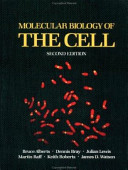Cancer as a Microevolutionary Process
The body of an animal operates as a society or ecosystem whose individual members are cells, reproducing by cell division and organized into collaborative assemblies or tissues. In our earlier discussion of the maintenance of tissues (Chapter 22), our interests were similar to those of the ecologist: cell births, deaths, habitats, territorial limitations, and the maintenance of population sizes. The one ecological topic conspicuously absent was that of natural selection: we said nothing of competition or mutation among somatic cells. The reason is that a healthy body is in this respect a very peculiar society, where self-sacrifice as opposed to survival of the fittest is the rule. Ultimately, all somatic cell lineages are committed to die: they leave no progeny and instead dedicate their existence to support of the germ cells, which alone have a chance of survival. There is no mystery in this, for the body is a clone, and the genome of the somatic cells is the same as that of the germ cells. By their self-sacrifice for the sake of the germ cells, the somatic cells help to propagate copies of their own genes.
Thus, unlike free-living cells such as bacteria, which compete to survive, the cells of a multicellular organism are committed to collaboration. To coordinate their behavior, the cells send, receive, and interpret an elaborate set of signals that serve as social controls, telling each of them how to act (see Chapter 15). As a result, each cell behaves in socially responsible manner, resting, dividing, differentiating, or dying as needed for the good of the organism. Molecular disturbances that upset this harmony mean trouble for a multicellular society. In a human body with more than 1014 cells, billions of cells experience mutations every day, potentially disrupting the social controls. Most dangerously, a mutation may give one cell a selective advantage, allowing it to divide more vigorously than its neighbors and to become a founder of a growing mutant clone. A mutation that gives rise to such selfish behavior by individual members of the cooperative can jeopardize the future of the whole enterprise. Repeated rounds of mutation, competition, and natural selection operating within the population of somatic cells cause matters to go from bad to worse. These are the basic ingredients of cancer: it is a disease in which individual mutant clones of cells begin by prospering at the expense of their neighbors, but in the end destroy the whole cellular society.
[...]
As we have seen, cancers in general seem to arise by a process in which an initial population of slightly abnormal cells, descendants of a single mutant ancestor, evolves from bad to worse through successive cycles of mutation and natural selection. At each stage, one cell acquires an additional mutation that gives it a selective advantage over its neighbors, making it better able to thrive in its environment an environment that, inside a tumor, may be harsh, with low levels of oxygen, scarce nutrients, and the natural barriers to growth presented by the surrounding normal tissues. The offspring of this well- adapted cell will continue to divide, eventually taking over the tumor and becoming the dominant clone in the developing lesion (Figure 23-11). Thus, tumors grow in fits and starts, as additional advantageous mutations arise and the cells bearing them flourish. Their evolution involves a large element of chance and usually takes many years; most of us die of other ailments before cancer has had time to develop.
[...]
In general, the rate of evolution in any population would be expected to depend on four main parameters: (1) the mutation rate, that is, the probability per gene per unit time that any given member of the population will undergo genetic change; (2) the number of individuals in the population; (3) the rate of reproduction, that is, the average number of generations of progeny produced per unit time; and (4) the selective advantage enjoyed by successful mutant individuals, that is, the ratio of the number of surviving fertile progeny they produce per unit time to the number of surviving fertile progeny produced by nonmutant individuals. These are the critical factors for the evolution of cancer cells in a multicellular organism, just as they are for the evolution of organisms on the surface of the Earth.
Notes:
Cancer evolves within us, growing by natural selection in rebellion against the environment of our body's ecosystem.
Folksonomies: evolution natural selection cancer disease microevolution
Taxonomies:
/health and fitness/disease/cancer (0.470767)
/health and fitness/disease (0.273802)
/society (0.268287)
Keywords:
cells (0.982441 (negative:-0.428904)), somatic cells (0.967395 (negative:-0.501400)), natural selection (0.786127 (negative:-0.204460)), germ cells (0.720913 (negative:-0.357763)), slightly abnormal cells (0.546352 (negative:-0.386843)), selective advantage (0.540309 (positive:0.392080)), somatic cell lineages (0.465754 (negative:-0.417768)), multicellular organism (0.451821 (negative:-0.234457)), free-living cells (0.449921 (neutral:0.000000)), Microevolutionary Process Cancer (0.447726 (negative:-0.594666)), individual members (0.432107 (negative:-0.714545)), social controls (0.423186 (negative:-0.238287)), cancer cells (0.414079 (negative:-0.234457)), individual mutant clones (0.399851 (negative:-0.639474)), single mutant ancestor (0.398192 (neutral:0.000000)), mutation (0.396767 (negative:-0.143630)), socially responsible manner (0.392913 (neutral:0.000000)), natural selection operating (0.388185 (negative:-0.569225)), successful mutant individuals (0.386770 (neutral:0.000000)), fertile progeny (0.379825 (neutral:0.000000)), additional advantageous mutations (0.377999 (neutral:0.000000)), additional mutation (0.316223 (positive:0.558405)), mutation rate (0.314747 (neutral:0.000000)), multicellular society (0.296144 (negative:-0.836781)), cell division (0.293861 (neutral:0.000000)), population sizes (0.287767 (neutral:0.000000)), cell births (0.281542 (negative:-0.292489)), earlier discussion (0.281423 (neutral:0.000000)), body (0.274418 (positive:0.458890)), territorial limitations (0.272142 (negative:-0.408502))
Entities:
Cancer:HealthCondition (0.705205 (negative:-0.574031)), cell division:FieldTerminology (0.493789 (neutral:0.000000)), founder:JobTitle (0.332637 (neutral:0.000000))
Concepts:
Natural selection (0.977902): dbpedia | freebase
Mutation (0.897444): dbpedia | freebase
Cancer (0.814862): dbpedia | freebase | opencyc
Genetics (0.779905): dbpedia | freebase | opencyc
Gene (0.749139): dbpedia | freebase
Evolution (0.698261): dbpedia | freebase | opencyc
DNA (0.695620): website | dbpedia | freebase | yago
Cell (0.554038): dbpedia | freebase





